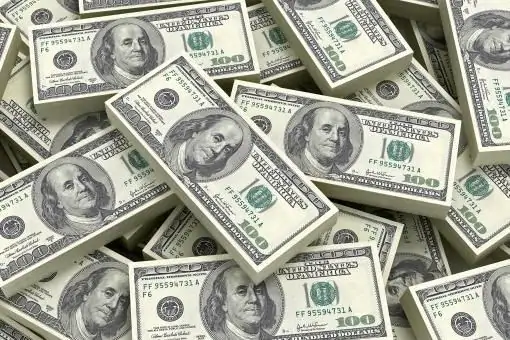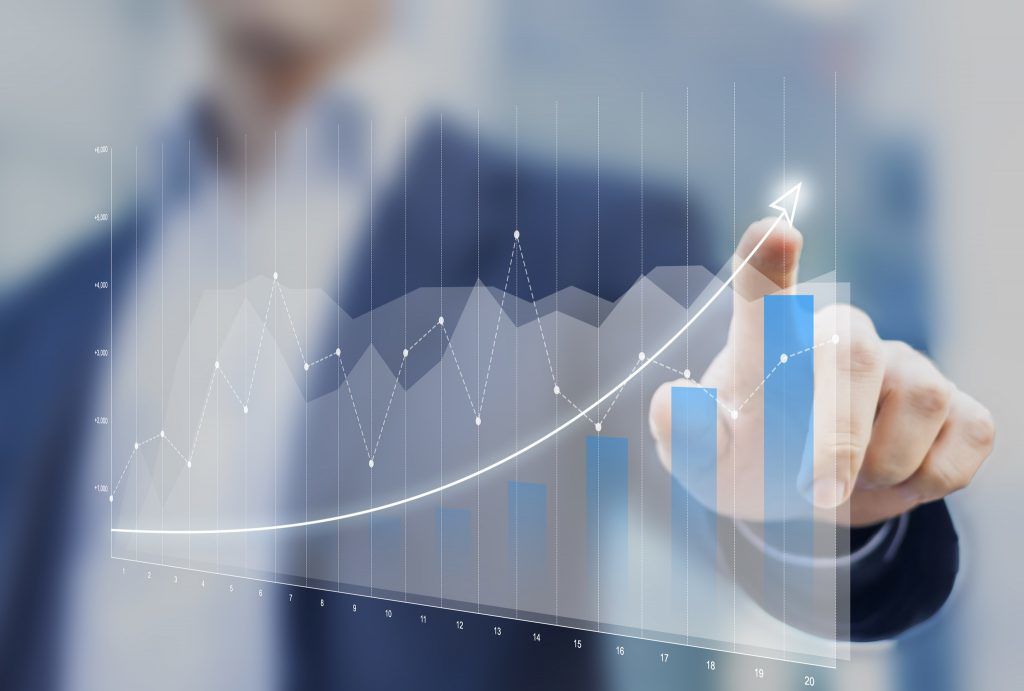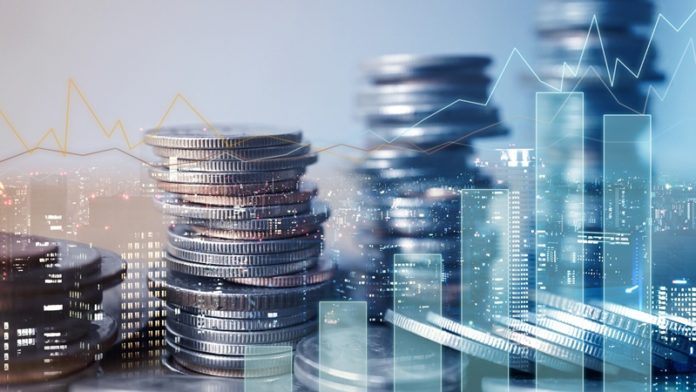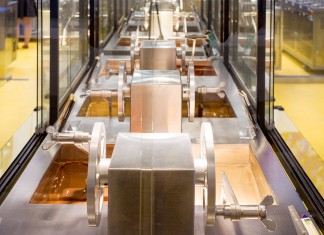Promising Companies are Sold at the Lowest Price, Resulting in a Historic Opportunity for Us to Invest in China
- Caifu Magazine | by Star
- EN

Since January 2019, economic data for 2018 has continually been released. According to the released data, the downward pressure on the Chinese economy increased significantly in December 2018. The National Bureau of Statistics (NBS) and Caixin’s manufacturing Purchasing Managers Index (PMIs) slipped to below the 50-point line separating growth from contraction. The growth rates of import and export turned negative. The sales of passenger vehicles fell by nearly 20 percent in December 2018.
I. Poor economic performance, but not a bad start in the equity market
There is a short-term downward pressure on the economy.
Since January 2019, economic data for 2018 has continually been released. According to the released data, the downward pressure on the Chinese economy increased significantly in December 2018. The National Bureau of Statistics (NBS) and Caixin’s manufacturing Purchasing Managers Index (PMIs) slipped to below the 50-point line separating growth from contraction. The growth rates of import and export turned negative. The sales of passenger vehicles fell by nearly 20 percent in December 2018.
Since January 2019, economic performance has been poor. The growth rate of coal consumption for electricity generation of major power plants changed from negative to positive in the first half of January, signifying short-term improvement in industrial production. However, looking at the two most important needs for real estate and automobiles, the sales of real estate in 34 major cities fell by 11 percent year-on-year in the first half of January. Among others, sales of property-selling entities in second-tier and third-tier cities have declined. The growth rate of the sales of passenger vehicles remained negative in the first two weeks of January. Without the support of demand, the improvement in production cannot be sustained.

The performance of A-shares is not poor.
Since 2019, China’s equity market has swept the haze of last year’s sharp drop, and then realized a good round of rebound.
So far this year, Shanghai Stock Exchange’s SSE Composite Index has increased by 4.1 percent; the Shenzhen Component Index has increased by 4.7 percent; the CSI 300 index has increased by 5.2 percent; and the Stock Exchange of Hong Kong’s Growth Enterprise Index has increased by 1.3 percent, the poorest performance.
In terms of the performance of industry classification, among the 29 of China International Trust and Investment Corporation’s (CITIC) primary industry categories, 28 industries have registered an increase since 2019, while only one industry – the catering and tourism industry – has registered a decrease.
Global equity markets have generally gone up.
Globally, the performance is similar to the Chinese equity market.
On the one hand, there is the economic downturn. In December 2018, the JPMorgan Global Manufacturing PMI dropped to 51.5, the lowest since October 2016. Among others, the manufacturing PMIs in the U.S. and the Eurozone dropped sharply, while the manufacturing PM of Japan only rebounded from the market lows. South Korea's export growth, a bellwether of the global economy, showed a negative growth of 1.2 percent in December 2018, which also confirms that the global economy is still slowing down.
On the other hand, the equity market has rebounded. The global equity market has gone up since 2019. So far, the U.S. S&P 500 Index has increased by 6.5 percent; the Nikkei 225 Index has increased by 3.3 percent; the German DAX Index has increased by 6.1 percent; the U.K.’s FTSE 100 Index has increased by 3.6 percent; and the Korea Composite Index has increased by 4.1 percent.
At the end of 2018, there were many bearish views about the U.S. economy, the Chinese economy and the performance of the equity market. At least so far, such bearish judgment is not accurate.
II. Economic performance is not the same as investment performance
No matter how good the economy is, investment is not necessarily profitable.
Most people want to invest in a good macroeconomic environment. In such a case, their unspoken words are: the better the economy, the better the performance of the equity market. But if we do that, the actual result may not be good.
For example, looking back at the performance of the Chinese economy over the past decade, 2007 marked its best performance, with a gross domestic product (GDP) growth rate of 14.2 percent. However, if you invested in Chinese A-shares in 2007, you would lose money, because the SSE Composite Index fluctuated between 2,541 and 6,142 points in 2007, while it closed at 2,494 points in 2018, which means that, if you bought stocks of the SSE Composite Index at any time in 2007, the return for holding them for 11 years would be negative.
In fact, there are similar cases in the U.S. Between 1999 and 2000, the U.S.’s GDP growth rate was over 6 percent. In those two years, if you bought the stocks of the S&P 500 Index which fluctuated between 1,206 and 1,553 points, basically you would lose money after holding them for 10 years, because the S&P 500 Index fluctuated between 667 and 1263 points during 2009 and 2010.
The case of Japan is the most striking. In the past 31 years, 1988 marked the Japanese economy’s best performance, with a GDP growth rate of 7.1 percent. In that year, if you bought the stocks of the Nikkei Index, which fluctuated between 21,148 and 30,264 points, the return for holding them for 31 years would be negative, because now the Nikkei Index is only 20,666 points.

No matter how worse the economy is, you would not necessarily lose money on your investment.
In the past 30 years, 2009 marked the Japanese economy’s worst performance. In 2009, the Japanese economy shrank by 5.4 percent, but Japanese equity market rose by 19 percent. In 2009, the Nikkei Index fluctuated between 7,021 and 10,767 points. If you bought stocks of the Nikkei Index at any time in 2009 and held them for more than four years, you would make money, because the Nikkei Index has never been lower than 10,398 points after 2013.
Similarly, the U.S. GDP grew at -2.5 percent in 2009, its lowest rate since 1947. If you bought U.S. stocks in 2009 when the S&P 500 Index fluctuated between 666 and 1,130 points, you would make a killing after holding them for more than three years, because the S&P 500 Index has never been lower than 1,258 points after 2012.
Let’s review the situation in China. The first quarter of 2009 marked the worst performance of the Chinese economy in the past 20 years, with a GDP growth rate of only 6.4 percent. The SSE Composite Index rose by 30.3 percent in the first quarter of 2009. If you bought A-shares in the first quarter of 2009 when the SSE Composite Index fluctuated between 1,844 and 2,403 points, you would still make money even after the sharp fall in 2018.
Economic performance is not the same as investment performance.
We remember that in 2007, when the Chinese economy was booming, based on the optimistic forecasts for the future Chinese economy, we wrote the report “The Roc will Fly with the Wind One Day,” where we omitted the sentence: “Soaring on the Wings of a Cyclone.” We used a 100-page report to prove that the Chinese equity market is expected to rise to 10,000 points of SSE Composite Index. In retrospect, this report is actually a big joke.
China’s total GDP was CNY 27 trillion in 2007, while it probably would exceed CNY 90 trillion in 2018, more than three times that in 2007. However, the SSE Composite Index closed at 5,262 points in 2007, while it closed at 2,494 points in 2018, not three times that in 2007. This tells us that economic performance is not a good predictor of the equity market.
Similarly, now it seems that everyone is an economist. If you let people talk about China’s economic problems, anyone can list a lot of them, such as debt problems and trade conflicts. Once the articles on these problems are written, they would immediately grab headlines at the “Sharing the Moments.” However, if based on such articles, we conclude that the Chinese equity market will fall sharply, when we review such conclusion 10 years later, does anyone know that it will not be another big joke?
III. When the economy is good, the stock price tends to be higher
Why cannot we simply predict the rise and fall of the equity market based on economic performance? Actually, the answer lies in the price of the stock.
The capital market is the most intelligent market. In other words, what you know is often known by others. Therefore, when you think that the economy is good, others also think so. Thus, if you buy the stocks at that time, no one would sell them to you cheaply.
For example, PetroChina, China’s second biggest oil producer, was listed as an A-share on November 5, 2007. Coinciding with the big bull market of A-shares, the SSE Composite Index rose to more than 6,000 points during that year. Everyone thought that the Chinese economy would continue to grow at a high rate and that there would be not enough oil in the world for China to use, and the oil price would continue to soar. As a result, PetroChina opened the market at a price of CNY 48.6, which was almost the highest price of A-share of PetroChina on record. If you bought the share of PetroChina on the opening day, you would never make money. The latest price of the share of PetroChina is just over CNY 7.
An important reference standard for measuring the price of a stock is its valuation, usually expressed as a price-earnings ratio (PE), or the multiple of the stock's price relative to its earnings.
In October 2007, when the SSE Composite Index reached 6,000, the valuation of PE (TTM) of the SSE Composite Index was as high as 51.5 times, while in December 2018, it was only 11 times. Therefore, although both China’s total economic output and the profit of listed companies increased by more than three times from 2007 to 2018, it did not offset the 80 percent drop in the valuation of the SSE Composite Index over the same period.
In other words, no matter how good the performance of the Chinese economy is after 2007, you would not make money from your investments because the price of the stock you buy is too high. Therefore, no matter how good the economic performance and earnings growth are, you would not make money from your investments.
IV. When the economy is poor, the stock is sold at a low price
The reverse is also true.
In economics, negative economic growth for two consecutive quarters is usually defined as a recession. From this point of view, in the past 40 years, the U.S. economy has experienced only four recessions, which respectively occurred in 1980, 1982, 1991 and 2008-2009. Among others, the time interval between the two recessions in 1980 and 1982 was the shortest.
However, if you bought the stocks from the U.S. S& P 500 Index in 1980, the return on holding them until now is as high as 25 times. From 1979 to 2018, the total GDP of the U.S. grew by about eight times, while the profits of American companies announced by the Bureau of Economic Analysis (BEA) also grew by about eight times. Why are U.S. stocks far outperforming economic growth and corporate earnings?
The answer is that the price for buying the U.S. stocks is cheap enough. At the beginning of 1980, the price-earnings (PE) valuation of the S&P 500 Index was only 7.4 times, while the latest PE valuation of the S&P 500 Index is about 20 times. That is to say, U.S. stocks were almost sold at the lowest price on record at the beginning of 1980. When U.S. stocks were purchased at that time, they enjoyed not only eight times of economic and corporate earnings growth, but they also nearly tripled valuation increase, resulting in 25 times of exponential return. And this does not take into account dividend income.
Let’s review China’s situation. China’s economic growth was below 7.5 percent in 2014. Since producer price index (PPI) deflation had lasted for three years at that time, many people worried that China’s economic growth would be below 7 percent in 2015 and that PPI deflation would continue to increase. These predictions were fulfilled afterward.
Just because of these pessimistic expectations, the PE valuation of the SSE Composite Index in the second quarter of 2014 dropped 9 times, the lowest level on record. If you bought A-shares when the SSE Composite Index fluctuated between 1,991 points and 2,048 points in the second quarter of 2014, you would make money no matter how the Chinese equity market fluctuated later.
V. When the economy is good, even a pig can fly in the sky
Why do the good times of the economy not necessarily mean good times for investment? There is an accurate description of such case: “Even a pig can fly if it is in the middle of a whirlwind.”
Over the past 20 years, the Chinese economy has been in an accelerating period of industrialization, which is supported by many favorable factors such as urbanization, demographic bonus and globalization. Therefore, many companies have performed well during this period, actually not because they have done a good job in business management, but because they have been riding on the rapid development of the Chinese economy.
For example, in China’s real estate industry in 2018, the sales of 30 companies exceeded CNY 100 billion, among which the sales of the top three real estate companies exceeded CNY 500 billion. However, when the real estate companies performed so well, why did the prices of several Hong Kong-listed real estate stocks plunge sharply recently? How many of the excellent achievements of these real estate companies are earned by these companies themselves? Is the house quality of Chinese real estate companies better than that of others? Or is it because our houses are built faster than others? How much does it come from the rigid demand of residents? How much does it come from excessive borrowings of the residents and the monetary housing subsidies for people displaced by the rebuilding of run-down areas? How much does it come from the faith in the real estate bubble?
Take another example: recently many companies that have defaulted on their debts used to be star companies in their respective fields. However, how many of excellent achievements of these companies are earned by their own operations? How many of them arecomprised of borrowing money, merging companies, or whitewashing their statements? If a company has no speculation or fraud, why cannot the company with a book value of CNY 15 billion repay the bond principal of CNY 1 billion?
If the Chinese economy still maintains high-speed growth and excessive money supply, maybe people cannot tell which companies are doing solid work and which ones are speculating. Therefore, if you make an investment when the economy is booming, you may accidentally buy a pig flying in the middle of a whirlwind. Once the wind stops, the pig will fall down.

VI. When the economy is poor, the eagle is still flying high
When the economy is poor, only the eagle is still flying high.
For example, let’s consider the situation in the smartphone industry. According to International Data Corporation’s (IDC) report, the global smartphone shipment will shrink by 3 percent in 2018, the largest proportion of which will be the shipment in China, down by 8.8 percent. Affected by this, even Apple’s iPhone, which sits comfortably atop market forecasts, its performance will be poorer than expected, and the price of its shares will fall sharply.

However, Huawei in China is not affected by the industry downturn, and its mobile phone shipment is rising against the trend. According to IDC data, the global smartphone shipment shrank by 6 percent in the third quarter of 2018. Among others, the shipment of Samsung mobile phones fell by 13.4 percent year-over-year and the shipment of Apple iPhones grew by 0.5 percent year-on-year, while the shipment of Huawei mobile phones grew by 32.9 percent year-on-year, rising to the second in the global ranking in the third quarter of 2018. Huawei has announced that its mobile phone shipment will exceed 200 million sets in 2018, an increase of more than 30 percent compared with 153 million sets in 2017. Its total revenue in 2018 will be U.S. $108.5 billion, up 21 percent from 2017.
As we all know, Huawei has suffered a lot of unfair treatment in the past year, but it has overcome the challenges one after another by sustaining high research and development (R&D) investment. According to European Commission statistics, Huawei’s R&D investment reached as much as 11.3 billion euros in 2017-2018, ranking fifth among all companies in the world. It has become the only Chinese company included in the list of the world’s top 50 companies. Huawei is far ahead in terms of 5G technology patents. Huawei mobile phones use Kirin chips developed independently by Huawei. Recently, Huawei released Kunpeng chips for servers. Such technological breakthroughs one after another give us hope for the Chinese economy.
And it is not just Huawei that gives us hope. In the automobile market, in 2018, China experienced the strongest winter in the past 20 years. According to the data from the China Passenger Car Association (CPCA), China’s passenger car sales fell by 6 percent year-on-year in 2018. However, in this unfavorable environment, Geely, a leading self-owned brand in China, sold more than 1.5 million vehicles in 2018, an increase of 20.3 percent year-on-year. The sales of Geely’s vehicles of several models, either sedans or SUVs, reached more than 10,000 units. Without the support of CMA, BMA and other technical framework platforms jointly developed by Geely and Volvo after its acquisition of Volvo, Geely could not have launched a number of best-selling models of vehicles.
Huawei and Geely represent China's manufacturing industry and China's hard power. The recent performance of TikTok has grabbed our attention. According to statistics from App Annie, among the latest app download rankings in the U.S. market, TikTok ranks the fourth on iOS’s free list and the second on Google Play’s free list, with a ranking far ahead of WhatsApp, Instagram and YouTube. WeChat had over one billion daily active users in 2018. Before that, WhatsApp was the only messaging app in the world with more than one billion daily active users. However, the Chinese still mainly use WeChat. TikTok is included in the list of top five mainstream apps in the U.S. market, which shows that China’s soft power is also growing.
According to CB Insight’s report, Beijing Bytedance Technology Co., Ltd. behind TikTok has surpassed Uber to become the world’s most valuable unicorn company at a valuation of U.S. $75 billion. AI technology is the key to the success of Byte Dance. In 2016, AI Lab for Byte Dance was born at the right moment. What we see in Toutiao and TikTok is the content that we like. In fact, such content come from AI-powered intelligent feeds according to our preferences for content. People like such content so much that they cannot bear to part with them.
Therefore, when the economy is poor, the pig flying in the middle of a whirlwind will fall down, but the eagle flying with its own strengths is still flying high.
The Asian financial crisis broke out in 1998. Tencent was founded in November 1998, while Alibaba was founded in 1999. At that time, who could have imagined that Tencent and Alibaba would become two giants in the internet field China? By the same token, although the current Chinese economy is poor, who can image whether there are new great companies in the pipeline?
VII. The worst times of the economy, the best times for investment
Maybe the economy is in the worst times.
In terms of economic growth, currently China faces the biggest challenge since the 2008 financial crisis. In terms of quarterly GDP growth, China’s GDP growth in the third quarter of 2018 fell to 6.5 percent, and by 2019, it is likely that China’s single-quarter GDP growth will be lower than 6.4 percent, lower than the lowest growth rate registered in the first quarter of 2009.
Looking ahead, China’s growth is facing three mountains. The first mountain is the China-U.S. trade conflict. At present, China’s total economic output has reached two-thirds of the U.S., which poses a challenge to the U.S.'s position as a global leader. From historical experience, there is a long-term conflict between the No.1 leader and the No. 2 leader, and it is difficult to resolve the conflict thoroughly in a short time.
The second mountain is an aging population. The birth data for 2018 has not been released yet. However, according to data released by Jiangsu Province, Ningbo City in Zhejiang Province, Qingdao City in Shandong Province and other places, the number of births in 2018 decreased by more than 10 percent, compared with 2017. Reckoning from this, in 2018, the number of new births in China may drop dramatically from 17.23 million to less than 16 million. This means that China’s birth rate is still declining after the liberalization of second births. The Academy of Social Sciences forecasts a negative population growth in China by 2030. However, a growing population is the foundation of economic development. Without enough young people, who will buy real estate and automobiles in China in the future?
The third mountain is huge debt pressure. According to data from the Bank of International Settlements, the overall debt-to-GDP ratio of the Chinese economy exceeded 250 percent by the end of 2017. Among others, the debt-to-GDP ratio in the corporate sector was as high as 160 percent, almost the highest among the world’s major economies, while the debt-to-GDP ratio of the residents rose to nearly 50 percent. The overall debt-to-GDP ratio of the Chinese economy is close to the U.S. economy prior to the U.S. subprime mortgage crisis. No upside potential remains. The road to developing the economy by borrowing money has come to an end.
Therefore, under the three major pressures of China-U.S. trade conflict, aging population and huge debt, people are worried about the long-term prospects of the Chinese economy. We may be in the worst economic era. Economically, maybe China is in the worst times.
Maybe it is the best times for investment.
But in terms of investment, maybe China is in the best times.
In fact, all the worries we have about the Chinese economy has happened in Japan. U.S. President Ronald Reagan launched a trade war between Japan and the U.S. in the 1980s, which resulted in a sharp appreciation of Japanese yen on the exchange rate and hindered exports of Japan to the U.S. And the debt-to-GDP ratio of Japan exceeded 250 percent in the 1980s. In terms of an aging population, Japan’s population aged 65 and over represents nearly 30 percent of its total population, while China's population aged 65 and over represents a little over 11 percent. Despite all these challenges, Japan’s per capita GDP remains around U.S. $40,000, far more than China’s current per capita GDP of U.S. $10,000 or so. This shows that under the same conditions, there is still a huge space for China’s future development. In fact, there are solutions to all three major problems facing China.
The Japanese have won 18 Nobel Prizes in the past 18 years. U.S. companies are far ahead in global R&D. Huawei's rise tells us that innovation is the hope of the future. However, innovation needs to reduce the burden on companies and focus on greater market dynamism, which requires us to move toward the direction of small government and big market. For this, the tax cut policy is the best.
Reagan became the greatest postwar president of the U.S. Relying on tax cuts, he opened up a new era in the innovation in the U.S. China started to implement a tax cut policy last year. The Central Economic Working Conference has clearly stated that the greater reductions in taxes and fees will be implemented in 2019. Chinese Premier Li Keqiang requires that the government should tighten its belt. This actually means that China will unswervingly move toward small government and big market, and China’s innovative era is promising.
Furthermore, a large part of China’s economic downturn is the result of China’s active de-leveraging. If eyes had no tears, then the soul would have no rainbow. Monetary tightening and economic downturn are actually bringing the Chinese economy back to the path of prosperity. China has shut down the shadow banking. Thus, the companies which finance their development by excessive borrowings are overwhelmed with sorrow. After eliminating these bad cells, just like great waves sweeping away sand, the real promising companies are those who can survive without excessive borrowing. Therefore, if we currently make investments, it is less likely that we buy a pig flying in the middle of a whirlwind, but it is more likely that we buy an eagle flying high.
In addition, because of the economic downturn, people are particularly selective about investment requirements. Thus, they valuate good companies at an extremely low price. Currently we can see that the PE valuation (TTM) of the SSE Composite Index is only 11 times, which is not only close to the lowest level on record, but also lower than that of the major developed markets. For example, the PE valuation (TTM) of the S&P 500 Index is 20 times, and the PE valuation (TTM) of the Nikkei 225 Index and German DAX Index is 14 times. The history of various countries has fully shown that in the long run, you can make money if you buy the shares cheaply.
We believe that, although the Chinese economy will still face downward pressure in the future, China’s policies of reducing leverage, squeezing money and bringing down taxes and fees are correct. Speculative companies are punished, while the good ones are on the rise. Furthermore, currently promising Chinese companies are being sold at the lowest price on record. This is actually a historic opportunity for us to invest in China.















